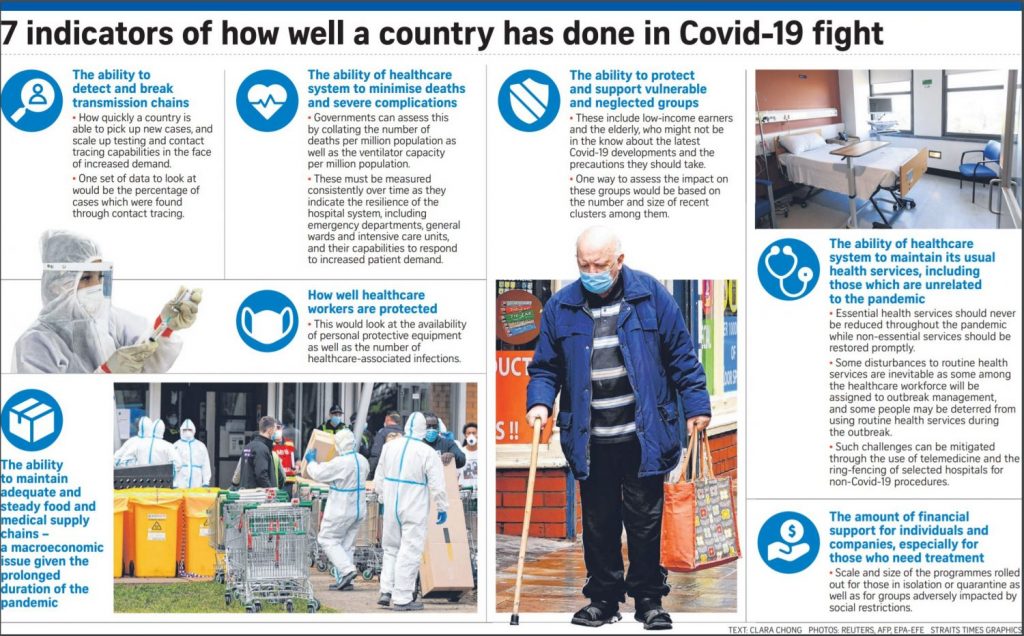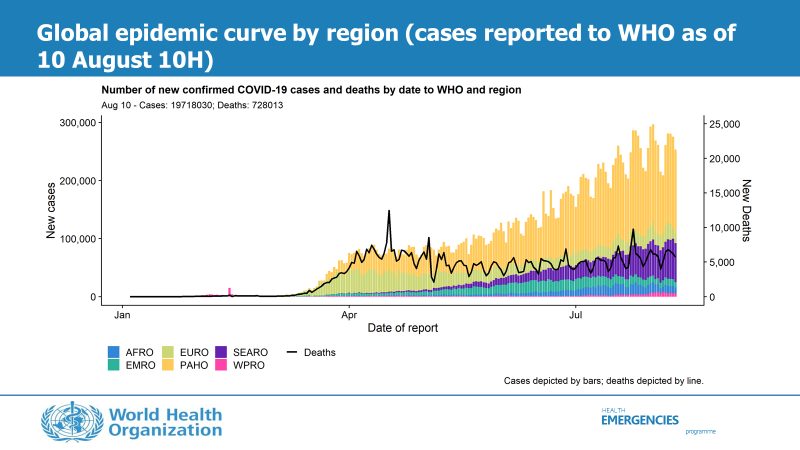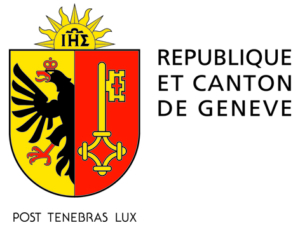PATTERNS OF RISK, DISEASE AND RESPONSE
By Dr David Nabarro.
The numbers of reported cases have been accelerating steadily in recent weeks especially in the Americas (WHO PAHO) and in South Asia (WHO SEARO). There are many people who have COVID (and some who die with COVID) whose illness is not reported, especially in poorer parts of the world (especially in Africa).
Enormous efforts are underway everywhere to contain the spread of the virus and limit its impact: intensified action is needed among poorer people and nations yet there are marked shortages of resources in multiple settings.
1 Recognizing that a dangerous virus is here to stay
The virus is here to stay and is dangerous. There are increasing reports of long-duration COVID among as many as 5% of those who are recovering. Leaders in local authorities, national governments, business, professional organizations, civil society, science and the media seek help with difficult decisions. The overarching objective is to preserve people’s health and well-being with minimal disruption to economic and social activity in rapidly changing situations. People must be involved: the capacities of government at local and national level are needed to support people as they d this and to encourage recovery of economies and societies. Reopening schools and universities, and keeping them open, is seen as an important next step and is cause for concern.
2 Establishing strategic principles for an effective response
There is growing recognition that Lockdowns have some, but limited, value: they freeze the virus in place and slow spread but do not suppress outbreaks. For societies everywhere to get ahead of the virus a comprehensive set of strategic principles should be pursued. These are based on the WHO strategic guidance of mid-April 2020. They include:
- Engage people fully so that they limit opportunities for the virus to spread through:
- Physical distancing (at least one and ideally 2 metres);
- Personal Hygiene and cough etiquette;
- Wearing face coverings [well-fitting, functional and effective);
- Self-isolating when symptomatic.
- Encourage integrated local-level action by ALL in society, focusing especially on people at greater risk in settings with higher likelihood of transmission. Pay special attention to ventilation in confined locations.
- Ensure well-functioning public health services to find cases, interrupt transmission, contain and suppress outbreaks promptly and support those who are vulnerable.
- Invest in what is needed for health and other essential services continue to function including for people who do not have COVID, especially those who are poor.
- Pay special attention to the needs of all those who provide care ensuring they are protected (eg dentists).
- Focus on communicating this narrative clearly, encouraging two-way dialogue everywhere.
- Develop metrics for assessing responses to COVID at local and national level in the full range of settings and use them transparently to help with decision-making.
The strategic principles are adapted in local settings. They are challenging in settings where resources are extremely limited eg refugee settings or very poor countries.
A key requirement for adapting the principles is that data are available to reveal the patterns of outbreaks spikes and surges. They should help identify which people are most at risk and which places are most likely to see outbreaks. There must be emphasis is on people who are in crowded workplaces and residential setting sespecially those who are poor and have limited options to change the ways in which they work and live. Men are more at risk of death: women face hardship.
There is a need for clarity on the performance of different response elements. The required data used go beyond case numbers and include indicators that show the level of performance, for example, on risk management procedures, public engagement, testing regimes, contact tracing, patient care outcomes and so on. As a result of Singapore’s experience seven performance indicators have been proposed: these could be adapted in different circumstances (see below)[1].

Feature graphic from article “Covid-19 report card: 7 indicators of how well a country has done in fighting outbreak” in The Straits Times (Singapore) by Clara Chong
3 Concerted engagement of multiple actors in prevention, alert and response
Things work best if businesses, community organizations, institutions and religious groups engage with local administrations and public health authorities in in locally integrated prevention, alert and response activities. This should be done in ways that are well organized, rigorous, and focused on safety of citizens, clientele, workforces, and members. It is important that employees do not feel penalized for expressing anxieties about coming to work, and are incentivised to self-isolate at home if they have COVID-19 symptoms or believe that they may have been exposed.
4 Establishing a unified strategy for COVID-19 readiness and response
People, local institutions, authorities and business leaders are understandably unsure about how to move forward with managing fear of COVID-19, threats to their health, chains and clusters of infection and, in some cases, surges of disease. It will be helpful if the strategic principles for “Keeping Safe Amid the COVID-19 Threat” are articulated and broadcast widely by all involved in public health action. There should be information about the potential triggers for adapting the strategic principles in different settings. Information should be provided in ways that help local authorities, governments and others to move forward with keeping their economies and education systems functioning.
5. Accelerating access to diagnostics, therapies and vaccines
As COVID-19 spreads among poor communities in poor countries, it is increasingly evident that response strategies need to take account of the increased risks faced by poorer people and THEIR communities. The strategies should ensure that those who have clear needs, but access limited resources, are able to access them as required. This is the rationale behind the Access to COVID-19 Tools ACT) accelerator being coordinated by the World Health Organization. This will prioritize the accepted procedures for validating newly developed tools (ensuring efficacy, reliability and safety) and for ensuring that they are accessible to those who need them.
[1] https://www.thelancet.com/pdfs/journals/lancet/PIIS0140-6736(20)31601-9.pdf



Leave a Reply
Want to join the discussion?Feel free to contribute!